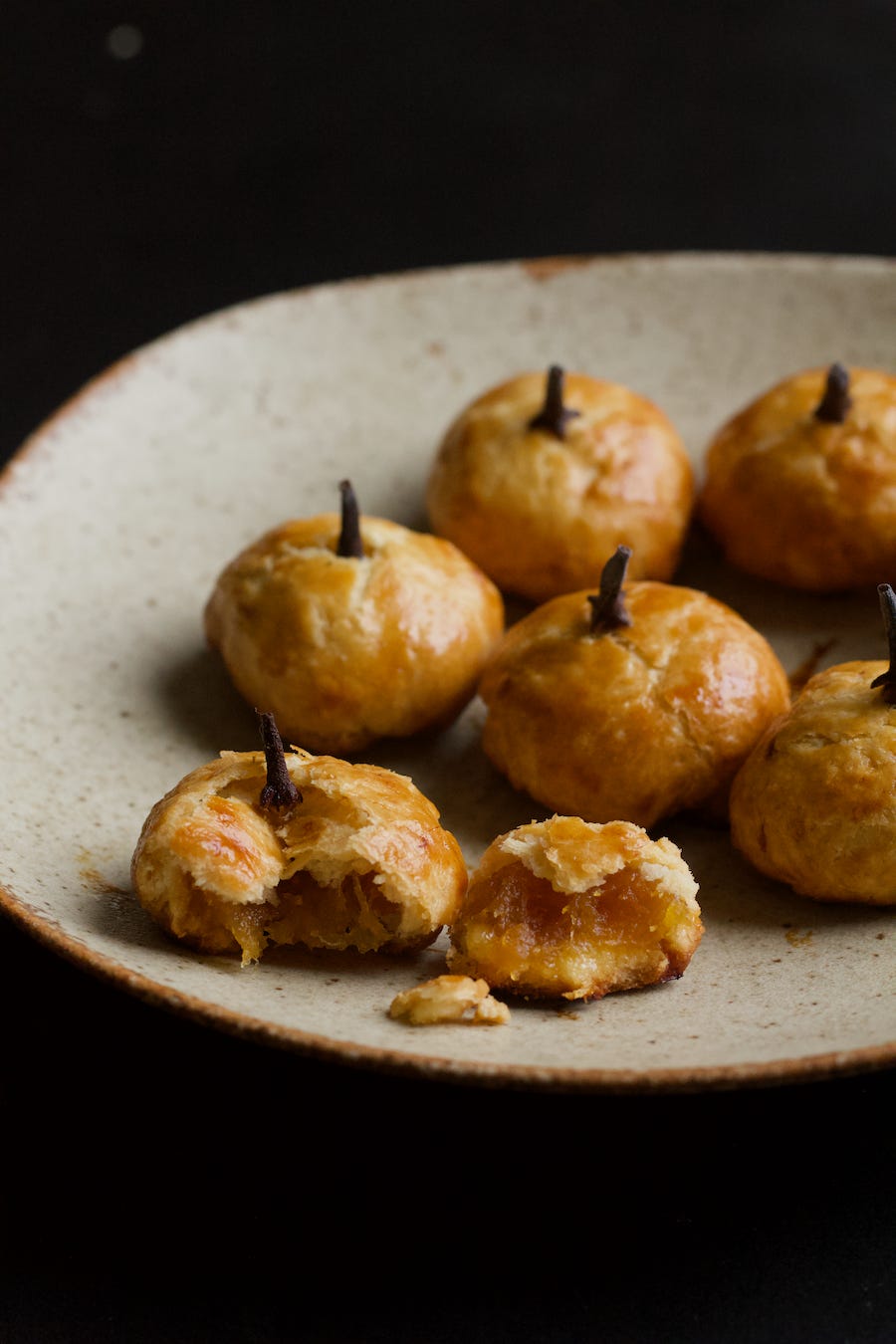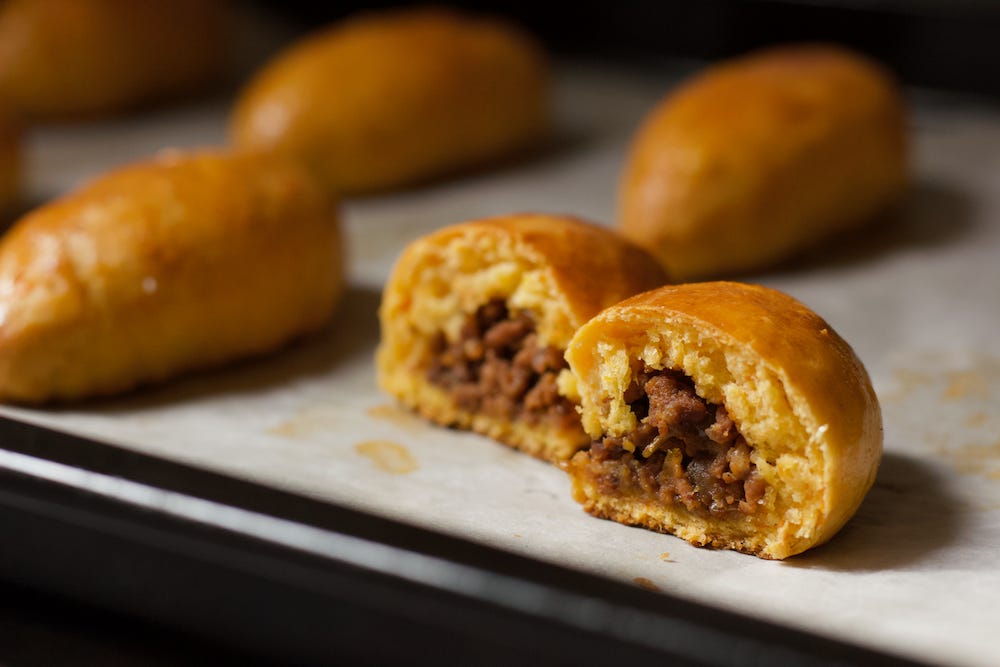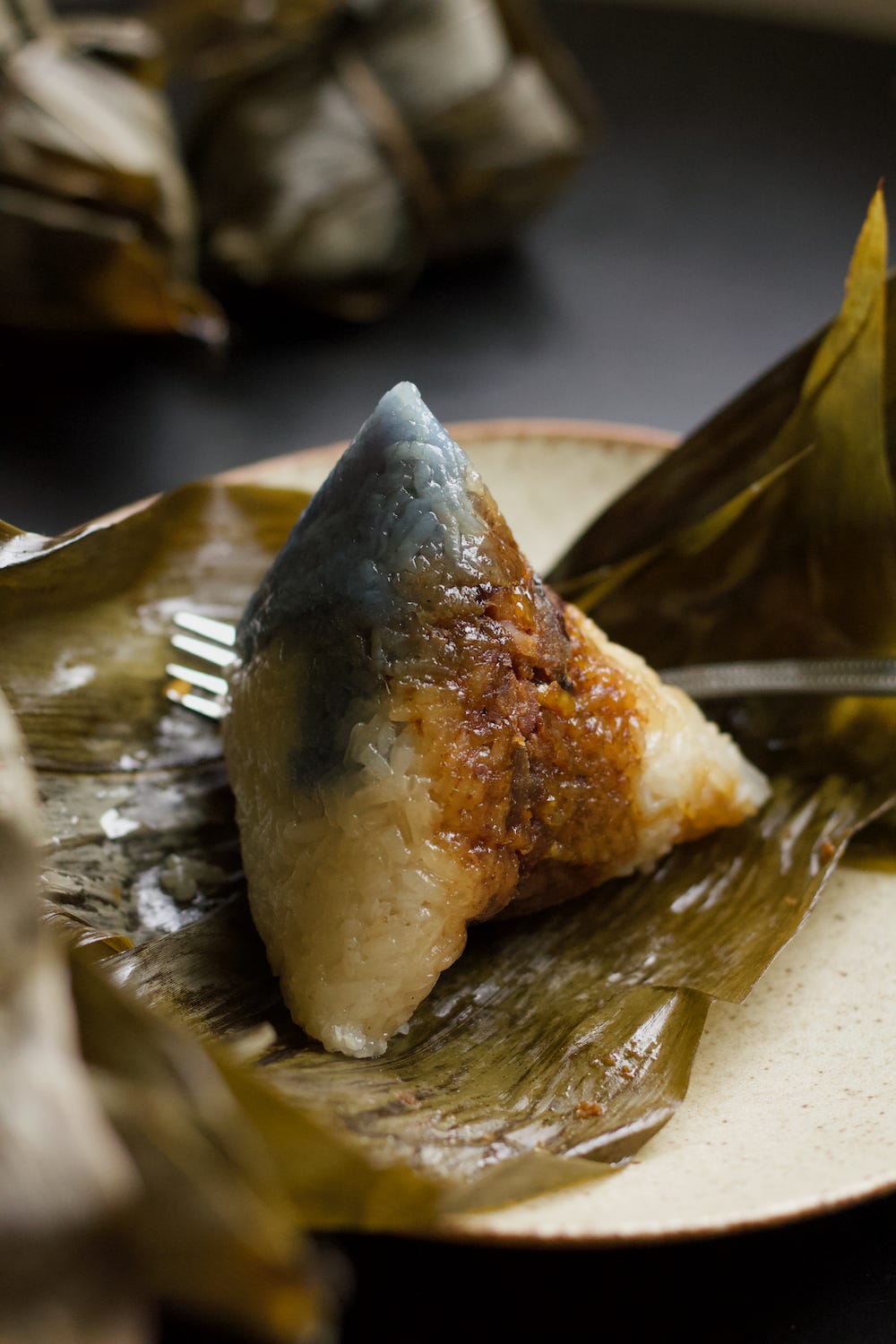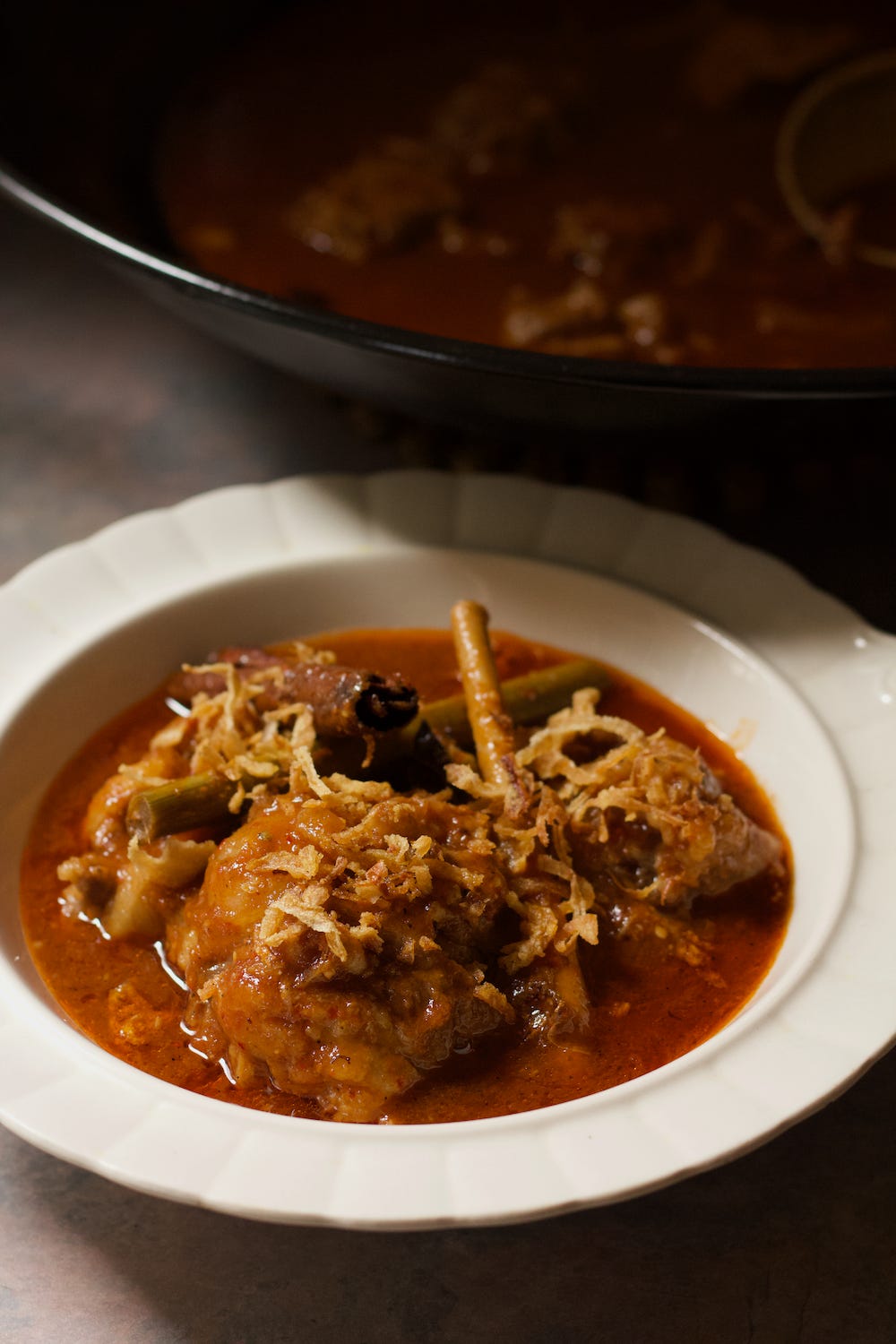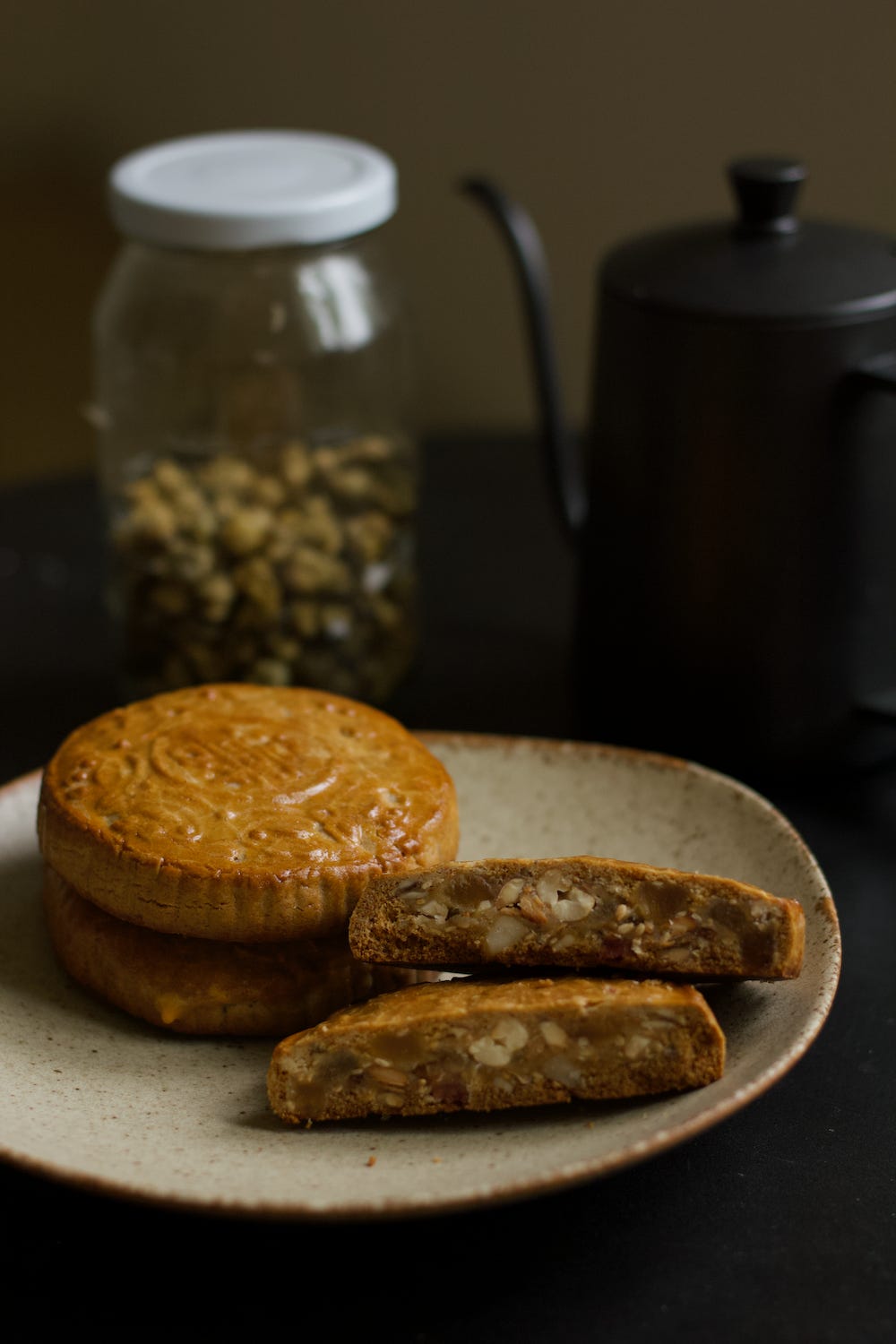I want to give you a fair review of all the recipes in our planner, of how challenging they are to prepare at home, just so that you know what to expect! I’m under no illusions - cooking traditional food at home is laborious. Many of these festive foods often involve an afternoon dedicated to preparing them, or the rallying of your friends and families, but I hope that you will not be deterred by the challenge. If you are a novice cook, attempt the easier ones or improvise to make things easier on yourself. It is all about starting where you are at, and being kind and compassionate to yourself. As I always tell Qin Yi, cooking is a muscle - the more you use it, the easier and more comfortable (and even pleasurable!) it gets.
January. Sweet Pongal rice to celebrate Pongal. Pongal is a four-day harvest festival dedicated to the Sun God. Preparing sweet Pongal rice is a key feature of the festival. Families stand around a pot of milk and rice and chant “pongalo pongal” as the milk spills over, symbolizing prosperity and abundance in the new year. This is a very comforting cardamom-scented porridge with plump raisins and toasted cashews folded through it.
Difficulty level: 3/10. Clean up is minimal and the cooking is such a breeze when you use a ricecooker like Purnima taught me to!
February. Pineapple tarts to celebrate Chinese New Year. What is Chinese New Year without pineapple tarts? It can be so difficult sourcing for the right cutters while living abroad, so I wrote a recipe for closed pineapple tarts - though you can easily adapt the shaping method if you are preparing open tarts. If you have never had a pineapple tart fresh from the oven, you are seriously missing out. It is seriously fragrant and I love Christopher Tan’s tip in The Way of Kueh of toasting pandan leaves and plain flour in a pan before sifting and incorporating into the dough - produces a much lighter, delicate cookie.
Difficulty: 6/10. Pineapple tarts are not as difficult as you think, but they do take a bit of intuition - how to know how far to take the jam, shaping the cookies, but the reward is immense. (P.S. This is possibly my favourite recipe in the book…)
March. Patra Ni Machchi to celebrate Parsi New Year. This looks like such an elaborate dish but is deceptively simple. All you do is make a green chilli and coconut chutney, smear it over fish, wrap it in banana leaves and steam until the fish is cooked. It is so delicious with rice. Gulnaz gave me a tip, which was to spread any leftover chutney on bread, layering on some cucumber slices and enjoy a Parsi take on cucumber sandwiches!
Difficulty: 3/10. You do need a blender for this recipe, which I know turns some people off because their blender is not great. To that I say, get yourself a Preethi! A blender makes your life in the kitchen so much more pleasurable. Once you have a good blender, 50% of the work is done!
April. Pang Susie to celebrate Easter. Pang Susie can be said to be a disappearing dish in Singapore - it is a sweet potato bun with spiced meat filling. As with many Eurasian dishes, the warming spices of nutmeg, cinnamon, star anise and cloves in the filling make it taste very Christmassy.
Difficulty: 4/10. If you can make dumplings, you can make Pang Susie! It is just a tiny bit more fiddly wrapping a cooked meat mixture in sweet potato dough. The dough, however, is a dream to work with - it is smooth, supple and slightly tacky. My favourite part of the process is glazing the buns while they are hot - the heat from the buns sets the eggwash to form kind of a lacquered finish.
May. Sayur Lodeh to celebrate Hari Raya Puasa. Sayur Lodeh is a great way to celebrate vegetables, so much veggie goodness in one dish. Making your own sambal and serunding is the icing on the cake, but just Sayur Lodeh over some rice is pretty ace!
Difficulty: 6/10. This recipe involves blending up a rempah - but once that is done that’s half the battle won. Feel free to switch up vegetables to what you have in the fridge or what you can find in the market. If you want to challenge yourself further, we have included QR codes in the book that link to sambal and serunding recipes to eat the Sayur Lodeh with.
June. Kueh Zhang to celebrate Dumpling Festival. I didn’t fall in love with Kueh Zhang (Nonya Zhang) until I made it at home myself. Sneaking in a square of pandan leaf into each little parcel and boiling them in pandan-infused water makes the Zhang so fragrant. If you have not had Nonya Zhang, you have to try it because it is so delicious, especially with candied bits of winter melon.
Difficulty: 9/10. Compared to Hokkien, Teochew and Cantonese Zhang, Kueh Zhang is relatively easy. Still it is laborious and involves practice. If you don’t tie the dumplings properly, they might unravel in the boiling process. It also takes practice to know exactly how seasoned the meat should taste, how much oil to use… but this is such an iconic dish to the Chinese and such a symbolic gesture to gift Zhang to other families that it is worth the effort. This is definitely one to get friends and family involved.
July. Sup Ekor Merah to celebrate Hari Raya Haji. Hari Raya Haji commemorates God’s mercy when He offered a ram to Prophet Ibrahim in place of Issac as a sacrifice. In temples, animals are slaughtered by devotees and the meat and offal distributed. Oxtail is a delicious and underrated cut of meat - one I absolutely adore. Unlike the neon red Sup Tulang that you see at hawker centres these days, the redness of this stew is entirely derived from tomato puree.
Difficulty: 7/10. It definitely needs a commitment of time, but nothing more complicated than making a curry. The steps involve layering of flavours and the end result reflects that. Delicious with toasted baguette!
August. Kaya Swiss Roll to celebrate National Day. Whenever I think of National Day, I think of kaya! Apart from kaya toast, making a swiss roll is a great way to use a jar of kaya. Unlike the factory-made stuff, homemade kaya tastes distinctively fresh. It has a slight bitter edge that almost reminds me of matcha.
Difficulty: 6/10. You will need some technical know-how on how to whip egg whites and how to fold egg whites into a batter for sure. However, if all that is too difficult, just make the kaya and have that on toast for breakfast on National Day or any day of the year for that matter!
September. Five Kernel Mooncake to celebrate Mooncake Festival. Wex doesn’t like desserts but he does love snacking on nuts. This is one of the few desserts he would reach for a second bite. This also happens to be my mom’s favourite type of mooncake, even though it might not be as fashionable as snow skin mooncakes with a chocolate truffle centre ;-)
Difficulty: 7/10. The hardest part of this recipe lies in its shaping. You want to create a firm enough imprint for it to show, and eggwash it extremely gently so that the eggwash does not pool in the crevices and obscure the beautiful pattern. More challenging than snowskin mooncakes but less tedious than making lotus paste mooncakes from scratch.
October. Yam Basket with Gong Bao Vegetables to celebrate Nine Emperor Gods Festival. Yam Basket is one of the best ways to showcase what taro is capable of! Once you master the yam basket, you can use the same dough to make Wu Kok (taro croquettes) or to wrap around seafood like scallops or prawns. It has just the most amazing texture and will definitely win anyone who loves traditional flavours and textures over.
Difficulty: 8/10. This involves deep-frying a full ring of yam dough and that can be scary for people who have never deep-fried anything in their lives! If that intimidates you, you can deep-fry smaller rings of dough and make miniature yam baskets!
November. Lamb Biryani. Like all other forms of biryani, this is a showstopper. Its complex flavour comes from layering flavours every step of the way - caramelizing onions, marinating the lamb, scattering on the herbs, using ghee etc.
Difficulty: 8/10. I’ll be honest - this is a celebratory dish that takes a full afternoon of work. But if I were to provide a recipe that involves any less work, I would be shortchanging you. Try making this recipe as it is the first time, then improvise to make it easier if you have to the next time.
December. Eurasian Chicken Pie. This is a staple in many Eurasian homes on Christmas day. It is a soupy mixture that is made with chicken, meatballs and vegetables, covered with puff pastry and baked. How festive you want the pie to look is entirely up to you :-)
Difficulty: 5/10. This is not a difficult recipe but it is slightly tedious gathering and prepping your ingredients. Once you have a good quality chicken stock and source a good all-butter puff pastry, the battle is half won! This is a “soupy pie” and is thus way more forgiving than your usual pie.
I hope these photos get you excited about cooking these recipes in the new year, and if you have not snagged your copy of our planner yet, you can still order it from our site. P.S. we have very limited copies of Peony left, so if you have your eye on it, now’s the time!





